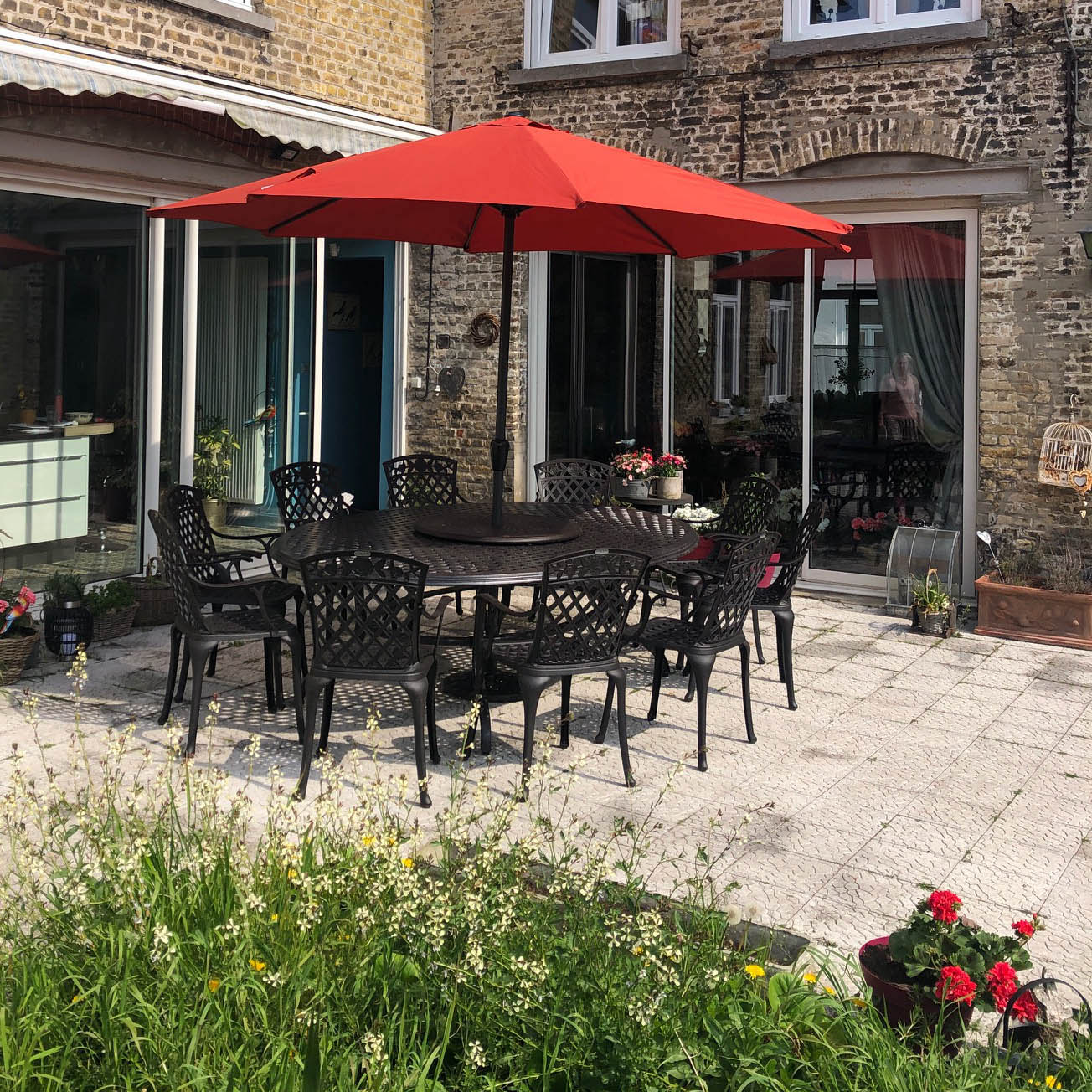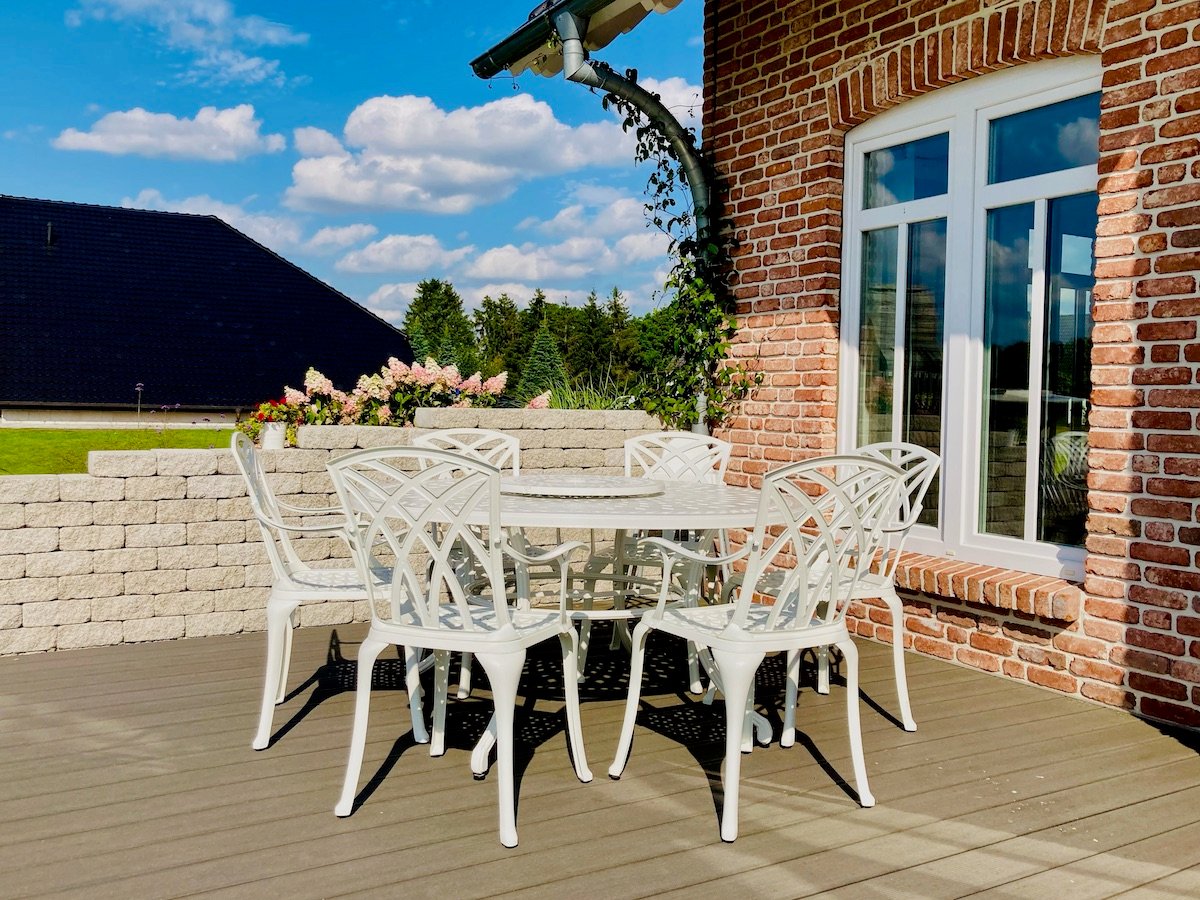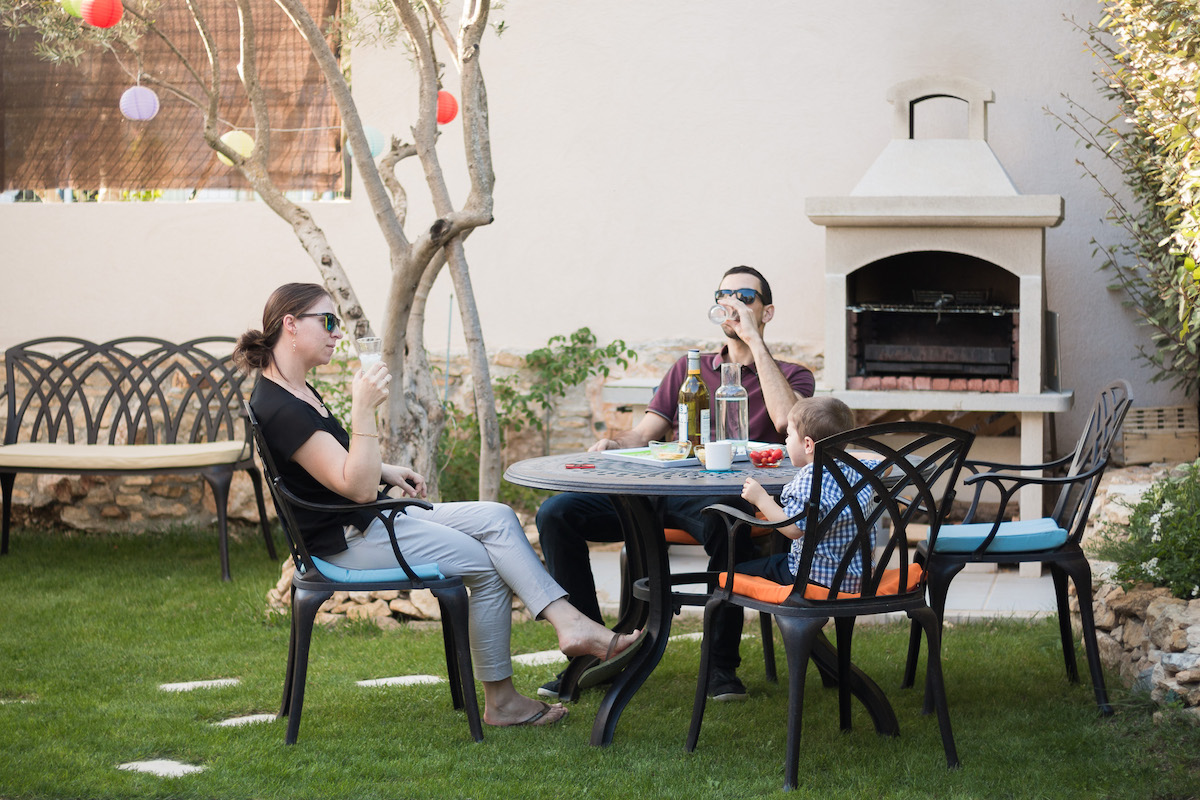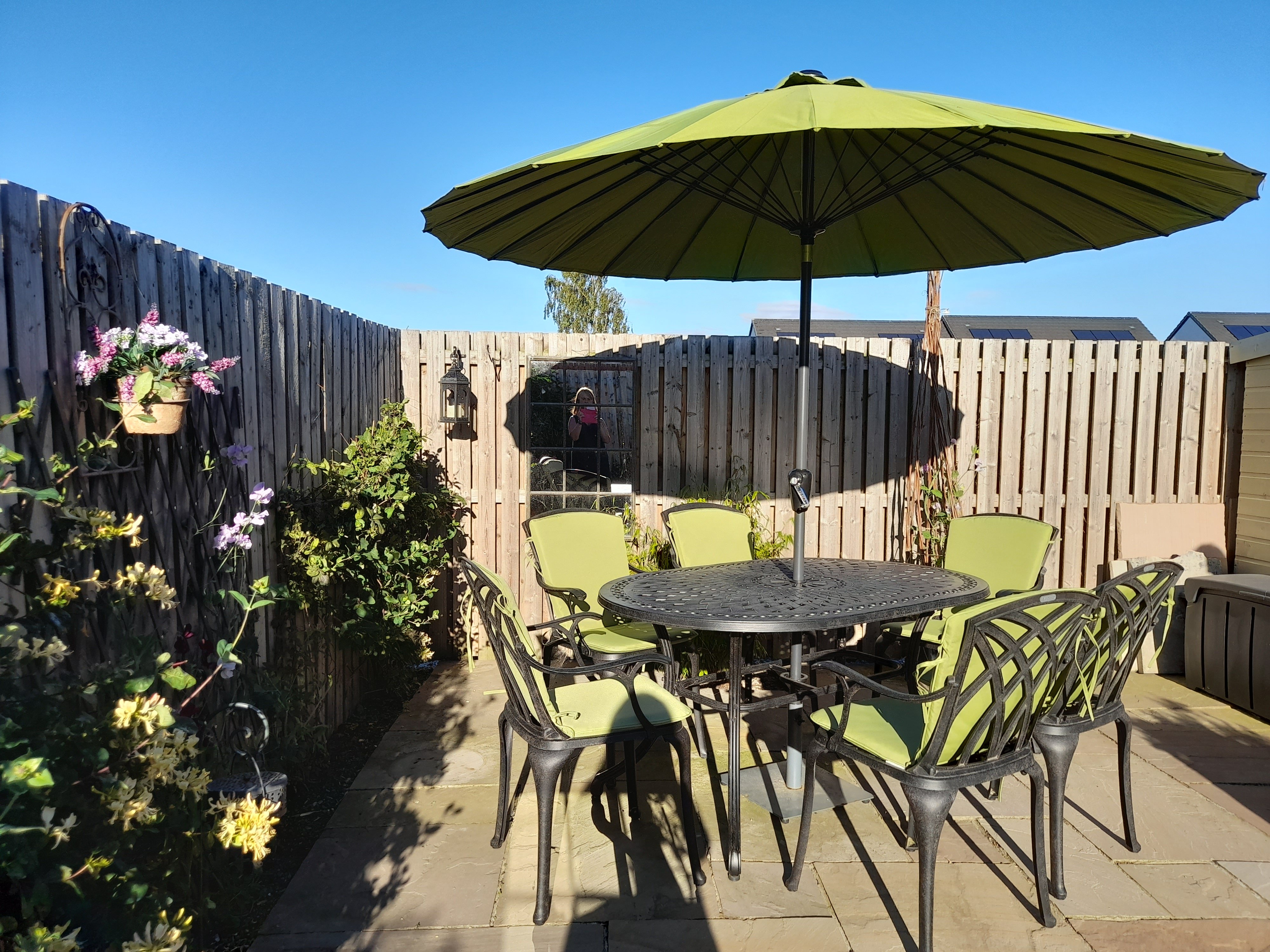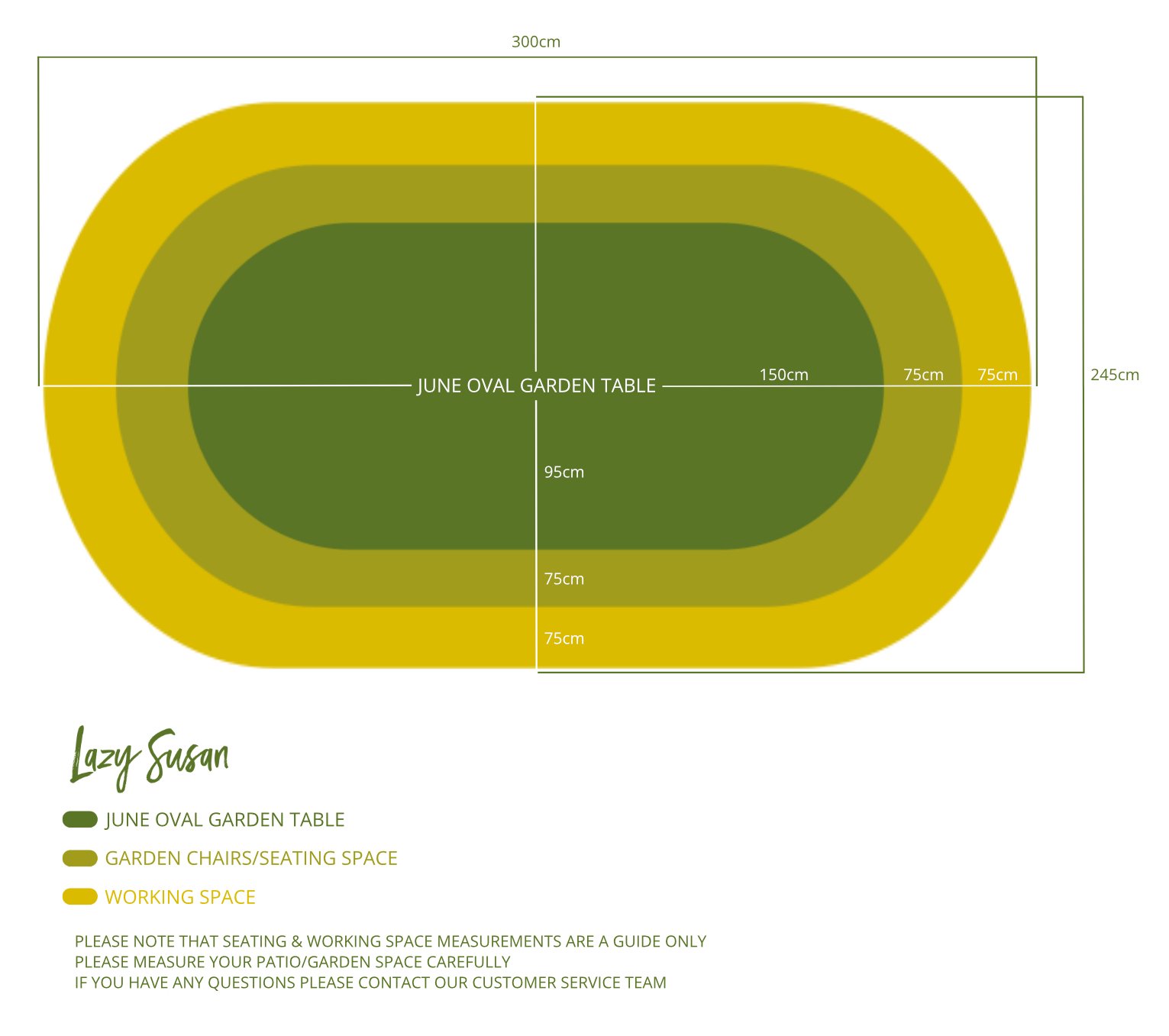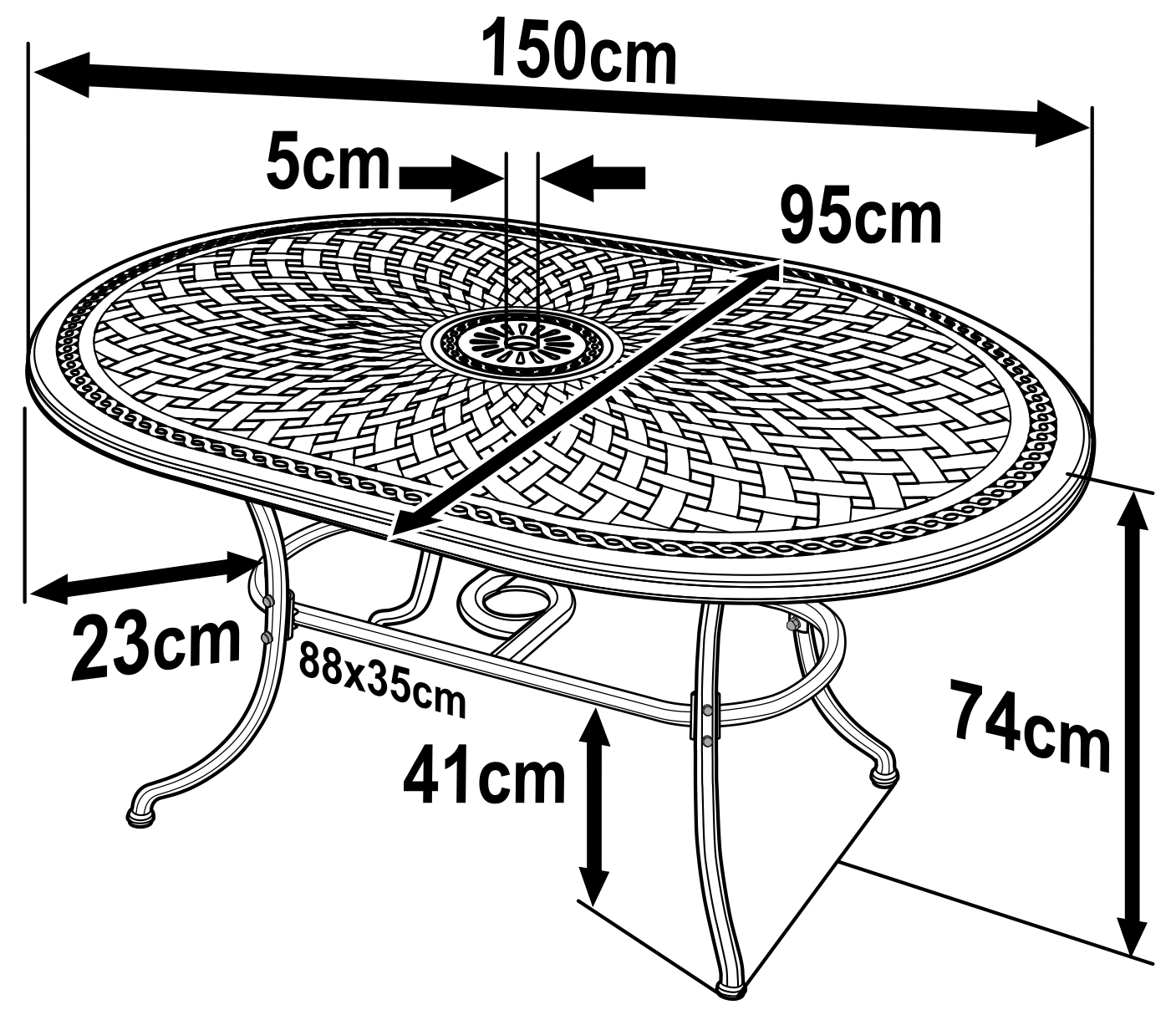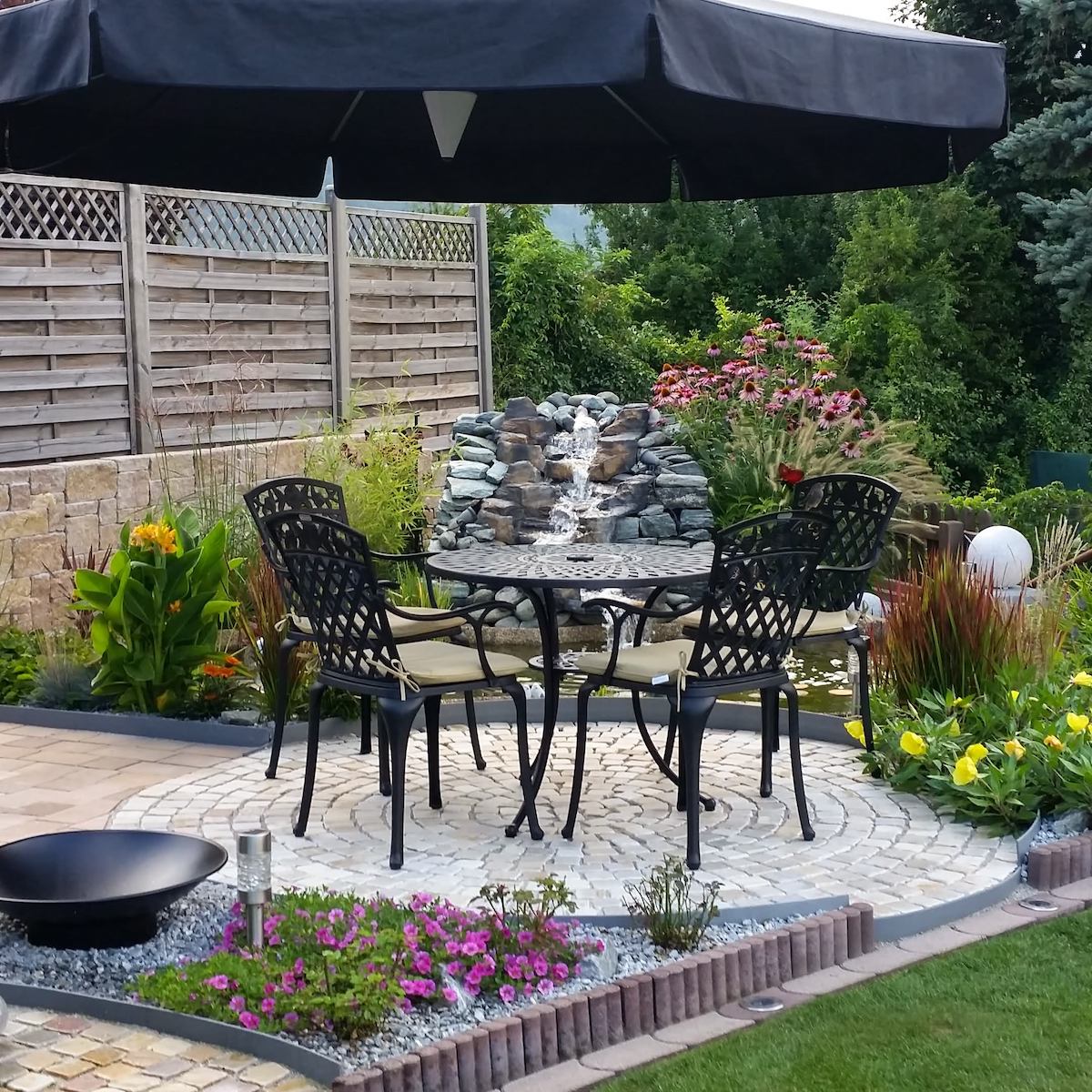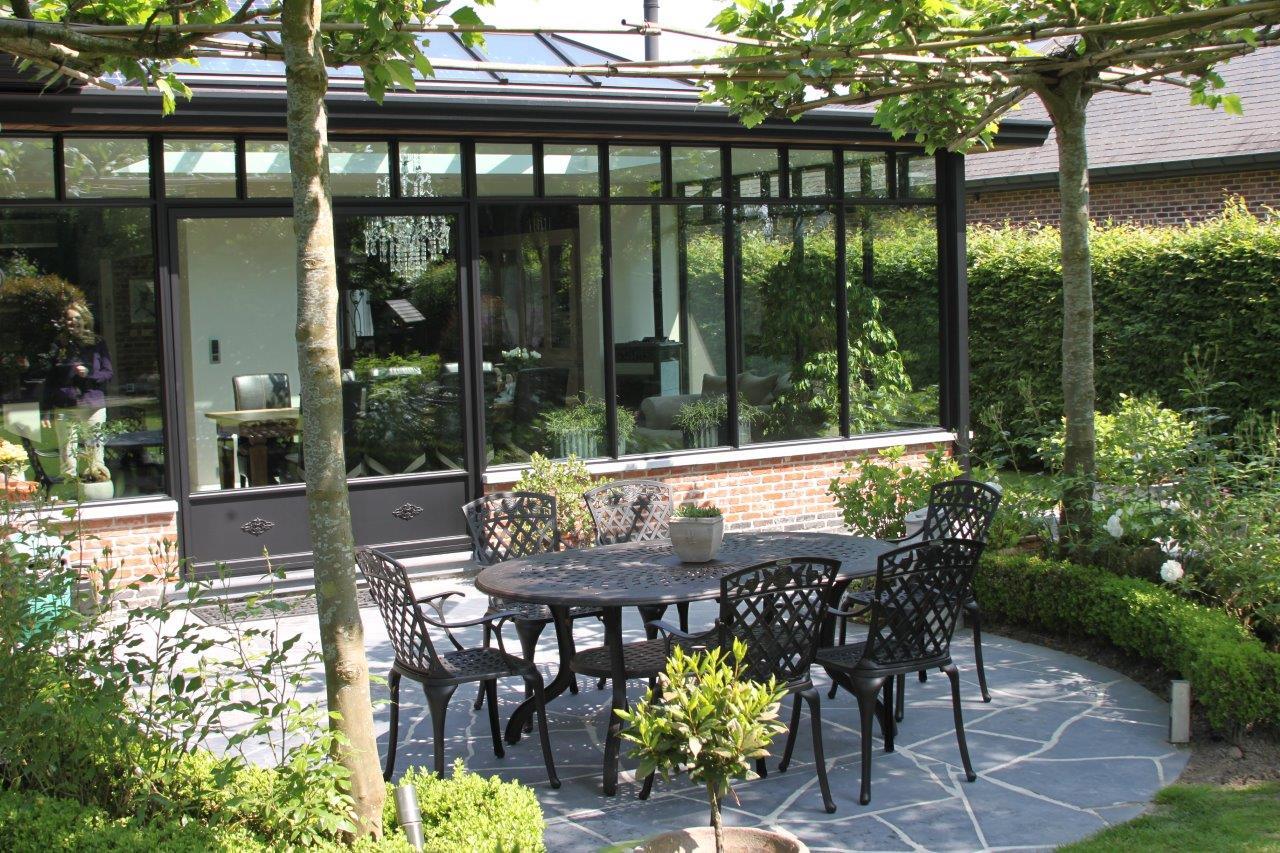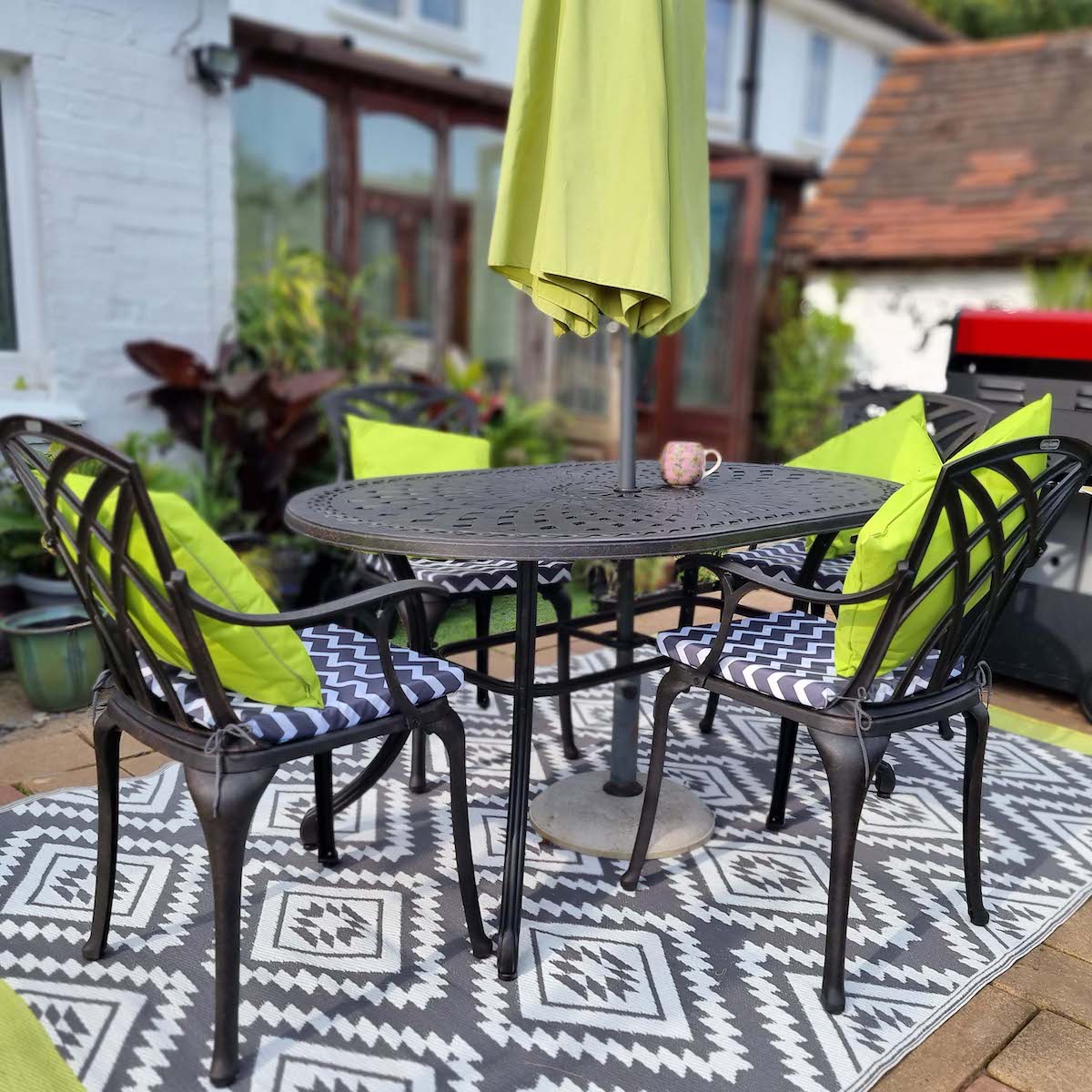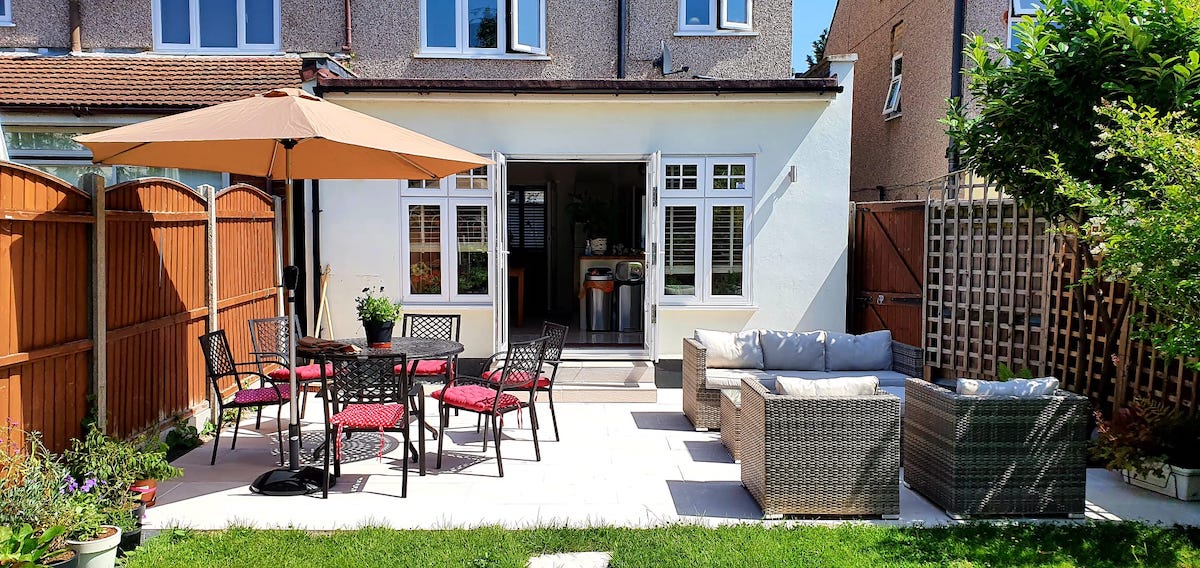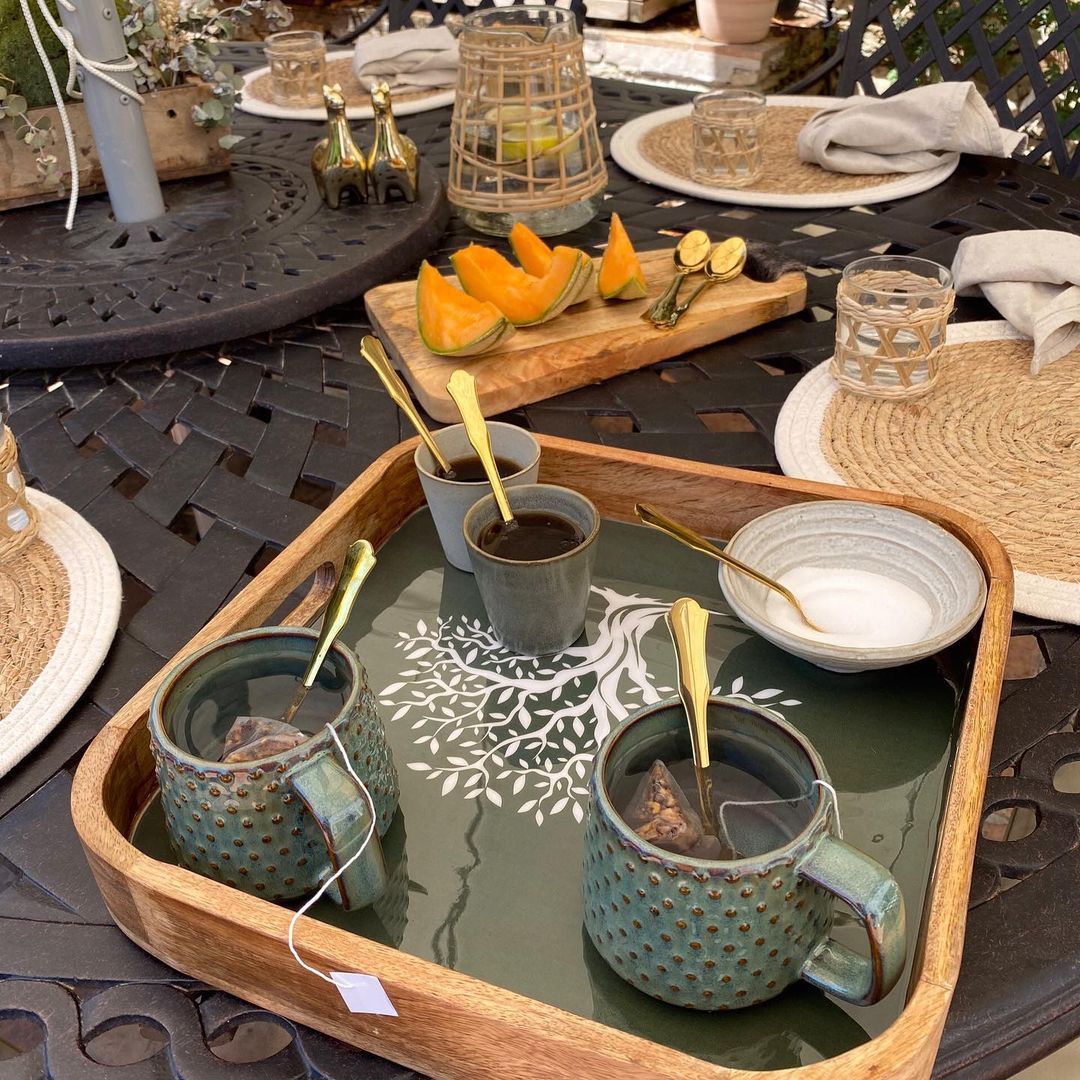Deciding how to arrange outdoor furniture is one of those decisions that at first seems easy but the more you analyse it (or in our case maybe over analyse it) there are some important factors that need to be considered.
Much like the placement of the furniture in a room can have a dramatic impact on the space in terms of how it both looks and functions, so too does the placement of items on a patio.
How to arrange outdoor furniture is one of those questions that many are afraid to ask or don’t give much thought and it is just plonked on the patio.
Not that we’re suggesting that Lazy Susan customers have no idea how to arrange outdoor furniture, far from it, the customer photos they send us clearly illustrate (as shown above where it is just off the kitchen) that they probably know just as much as us.
At the end of the day, a patio is (and should be viewed) just like a room inside the home though…
Just like you can apply interior design principles to make your indoor space not only look better but function and flow better, the same fundamentals can be applied to your outdoor living space.
Garden design has its own principles but again there is much convergence. However, in this article, we’re primarily focussing on the outdoor living space where you sit, relax, cook and eat, etc.
So if you’re thinking of buying from us or have existing Lazy Susan Outdoor Furniture and you’re asking yourself "how should I arrange my outdoor furniture?" or "can I better arrange my outdoor furniture?", then hopefully our simple patio design rules can help you find that perfect layout.
You might even think it's perfect as is but sometimes by making the smallest tweak, the space can flow a little smoother, work a little smarter or visually/stylistically make a big difference.
The basic principles of Outdoor Furniture arrangement
Our ultimate focus here is to achieve a balance of style, function and flow…
That sweet spot where the furniture and wider garden/patio space look great, functions in terms of how you utilise the furniture (and the wider outdoor space) and so that you can safely and comfortably move around when all is in situ.
Pick a focal point
The starting point is to pick a focal point, which is basically an area of interest that will draw the eye and establish the part of the garden that you feel is most important. In this instance, on the patio area alone, we want it to be your outdoor furniture.
That is not to say that other parts of the wider garden design aren’t important, but you want your visitors drawn to the outdoor living space.
If you have a larger garden you could potentially have multiple focal points that take the eye on a journey through the space.
For example, your outdoor furniture could be the focal point on your patio, a water feature could draw you into the middle of the garden, while a garden bench or statement tree could be positioned at the foot of the garden.
It helps the eye flow through the space and gives it points where it can land and take in what’s going on. In a living room, this is often the fireplace or TV for example. There are always lots of other things going on, but the eye is centred on this focal point.
In smaller gardens you can usually have only one focal point as you simply don’t have the space, too much going on is confusing. In that instance, your outdoor furniture is best placed be the focal point.
The reason you need your furniture positioned as a focal point is to anchor the space and create a point where you are drawn outside to use the outdoor living area.
Positioning the furniture so that it is in the prime view from the point you best view your garden (be it a kitchen window or patio doors) will draw people outside (as illustrated with our White Frances 6-seater above).
You can then build the rest of the patio around that central anchor, and frame it so to speak with planting, accessories, decor, etc.
How do you use your patio?
When people are unsure of what type of patio set (e.g. dining, sofa, day bed, etc) to purchase we always ask them to think about how they use the space and get furniture that fits with (and enhances) their lifestyle.
Of course, there’s always a lot to consider when asked this question. Planning the perfect garden is no easy task and our patios often have multiple uses and users.
Think in more general terms about what you like to do in your garden and how you would like to use your outdoor space, and this should help influence how best to arrange your patio furniture.
When considering how best to arrange outdoor furniture, consider the following:
- How do people move around the space?
- How is the patio positioned in terms of sunlight?
- How is the patio positioned in terms of privacy?
- How much free space do you have to play with?
If you have a small patio, potential compromises might have to be made in terms of the type of patio furniture set too.
If you have a larger patio, then you might want to look at zoning the space into different functions such as dining and relaxing (more of that in a bit).
It is also important to think about the style of your home, what will fit best with the property itself and the wider outdoor space?
If you like to dine outside then arranging the furniture and wider patio space symmetrically and close to the kitchen can help to create a more formal space.
Alternatively, if you want the space to have a more relaxed casual feel with an outdoor grill and sofa-style seating, then arranging the patio asymmetrically can better deliver in that respect.
When deciding where to position outdoor furniture, always try and keep in mind how you like (or want to) use that space.
Carefully measure and plan it out on paper
Once you have a clear idea of function and what type of garden furniture (e.g. outdoor dining table, bistro set, outdoor sofa, etc) will best deliver, you need to carefully measure and plan it out on paper.
The diagram above shows the floor space we recommend for our June Oval Garden Tables (above top), while the dimensions of the table itself, as found in our shop, are shown in the illustration below.
When looking at the space you need for the June outdoor table set it is vital we factor in additional space for you and your guests to comfortably sit at the table with space left for the patio to still function and flow.
And by function and flow, we mean leaving enough room to pull the chairs out and walk around when people are seated.
This is what we refer to in the floor plan above as the ‘working space’ and you can see what we recommend (the light blue area) around 75cm in the diagram above.
The floor space diagram is of course just a guide, you may feel you can work with a little less working space. For example, if you’re close to a patio edge onto a lawn, then that’ll still work but it could be much less than 75cm (as shown in the customer photo of our Mia 4-seater Set below).
Every patio is different, just take these measurements and apply them to the ‘free’ outdoor space you have available/where want the set to fit when used.
Factor in other elements such as planters, a BBQ, fire pit, steps, walls, other pieces of outdoor furniture such as a sofa, different shapes of the patio, etc.
Our June table on its own is 150 cm long by 95 cm wide (as shown in the dimensions diagram and floor plan). Add onto that the 75 cm for the chairs and recommended 75 cm of ‘Working Space’ and you need around 300 cm by 245 cm of free space for that set to work.
That’s around 7 metres squared of patio space (give or take) needed to place the table with 6 chairs and leave enough for the patio to still function and flow when in place.
How do you move around your patio furniture?
We’ve touched on flow already but it is such as important factor when establishing the best way to arrange outdoor furniture. You want people to move around comfortably (safely) without being impeded and/or creating bottlenecks/congestion.
In garden design, flow is such an important but often overlooked element. You want to take people on a journey and create points where they can stop and take in.
On the patio itself, the same is true. You want to bring a sense of organisation to the space.
Not in some boring uniform way but so that the patio has some thought and logic behind how it flows and functions to best create a level of comfort and usability.
Think about how you enter and move through the patio itself, from home to patio, patio to garden, etc. Is there a clear and unobstructed pathway to get on and off? Are there areas such as steps that could become crowded?
This ties back into the working space in the previous section. You don’t want to place your furniture in a spot that will obstruct movement or make for an uncomfortable seating experience.
Our advice is to always leave plenty of free space for high traffic areas. If you can position your outdoor furniture away from these areas too, then always best to do so. That way you’ll direct people around/away from the primary seating area rather than trying to cut through it.
Layout your patio like a room
It is a phrase regular readers of this blog will have heard us use many times, and if not us, then you’ll have definitely come across it in the media or on TV. However, the concept of “bringing the inside outside” is perfect when considering how to arrange your outdoor furniture.
One way you can do this is to start with the largest piece of outdoor furniture, which the majority of the time is your Lazy Susan Outdoor Table. Use this as the focal point and arrange the rest of the space around it, or position it facing the focal point so that you add to rather than detract attention.
Try not to push furniture against any walls or the edge of the defined patio area unless you have no other choice. You want the space to feel open, create that natural flow and ultimately create a place where people instinctively gather.
Even a few inches from the wall will help smaller spaces feel bigger. In this scenario, you want to avoid limiting the sense of space and make the patio look bigger than it is. Give your outdoor furniture space to breathe.
Once the table and chairs are in place you can layer the rest of the patio around it.
Think of the patio as a picture. Sometimes a slight nudge to one side can make all the difference. Create a balance around it with smaller furniture pieces such as a bench, side table, etc but try not to group too much in one area.
Zone your patio for different functions
Whilst the furniture often has to work harder in a smaller space, the arrangement is often a little more straightforward. And by working harder, we basically mean that you can often only purchase smaller-sized sets and they have to perform a number of functions.
In a larger space, you have the opposite problem. You can purchase multiple pieces but arranging them is critical to giving the space the necessary balance and harmony.
However, the best solution is to divide the patio into different zones/sections to create a more functional outdoor living space.
This way you reduce the ‘dead’ space and have a patio that has sections for different moods, times of day (in and out of sunlight) or whatever it is you like to do, be it cooking, relaxing, dining, etc.
To add interest and help the space flow look at how you can differentiate the different zones just as you would with a large open plan inside living space. You can then use planting or outdoor furniture such as a dining table set or sofa to divide the space.
Acessorise, Acessorise, Acessorise
Just as important as how you arrange your outdoor furniture is how you accessorise it (and the surrounding patio).
Once you find a good place to put the furniture, the accessories are what will finish it off. No matter how beautifully furnished your patio is, it will be left looking (and feeling) unloved without some simple finishing touches.
Outdoor cushions, rugs, container planting, parasols, decor and lighting will all help to enhance your outdoor furniture and invite people outside to use it.
One final point, just remember that Lazy Susan Outdoor Furniture is constructed from cast aluminium, so whilst it is robust, you can still easily pick it up if you want to rearrange your patio. Try it in a few different positions, see which works best, and switch it up a little.
If you have any photos of our outdoor furniture in situ such as the ones featured in this post, then we’d love to see them for our Do Some Good charity campaign. Maybe your garden will be featured in our next article!
You can tag us @LazySusanFurniture on Instagram or Facebook or email them to us at [email protected].




